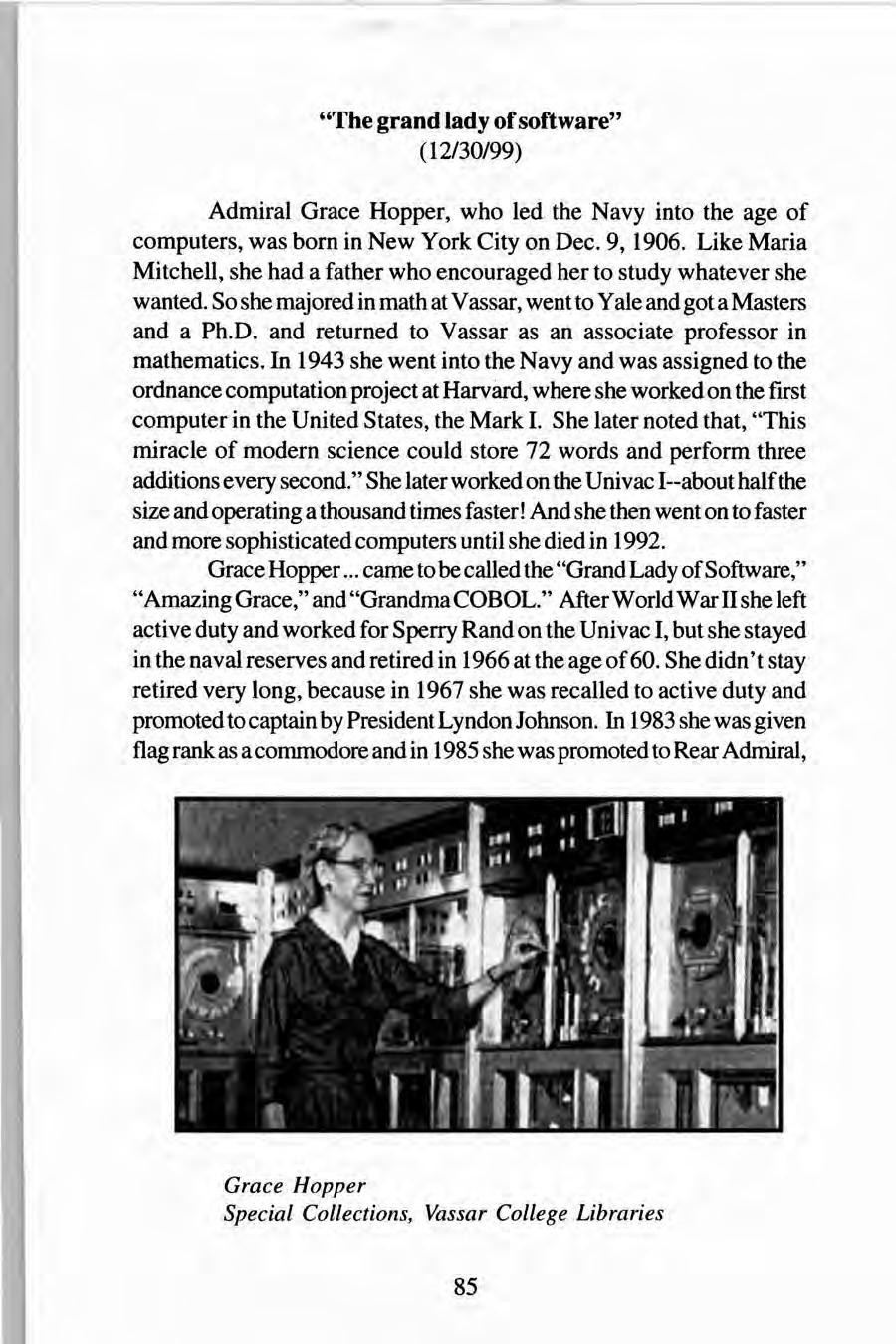
4 minute read
Introduction
Few women have been the subject of articles in the annual DCHS Year Books since the Society's beginning in 1914 and, with some notable exceptions, few of the hundreds of articles have been written by women. This issue, the combined 1999-2000 Year Book, attempts to correct that imbalance. The partial list of women in Ghee and Mauri' s self-guided tour shows an impressive number of accomplished women who have lived in the county from the 17th to the 20th century. The articles that follow offer a small sample of women who have lived in Dutchess. Here they raised children and cared for their families, established libraries, worked for the rights of women and minorities, volunteered in myriad ways. Some used their wealth to make the county more livable, others preserved the environment, provided health care, ran for office. They inspire us to follow in their footsteps according to our talents and abilities. We are all their beneficiaries.
In a chapter from her autobiography, Dorothea Taylor traced the beginnings of the movement to educate retarded children in Dutchess County and the origins of the Little Red School House. Taylor believed each child has potential for growth and that "the education of children and their teachers is society's greatest tool for improving itself."
Ruth Hogan's tribute to her mother, Mary Lucy Ham Alley, shows a life devoted to family and community that lasted until her death in 1988 at the age of 95. Of her mother, Hogan writes, "She did not concede adversity. Rather, she ... found a way to overcome or circumvent obstacles."
Maria Mitchell was largely self-taught and knew from experience that women were the intellectual equals of men. She proved it in her 23year career as professor of astronomy and director of the observatory at Vassar College. Elizabeth Daniels has written of a lesser-known aspect of Mitchell's life, her efforts to develop and advance women in general.
Lawrence Mamiya' s article about Bessie Harden Payne presents a woman who used her many talents to create a life of service. As a wife, mother, missionary in South Africa, teacher and principal of the Little Red School House, and later as a civil rights worker, active member of Ebenezer Baptist Church and Board of Directors of Catherine Street Community
Center, Payne worked to improve opportunities for Dutchess County's African-American community.
In the photo essay about Pauline Reichert Slater we glimpse a way oflife that would have been the experience of many second generation families in Poughkeepsie in the 19th century. Their whole lives were lived in the Union and South Perry Street neighborhood of Poughkeepsie. Her parents and her husband's family had immigrated from Germany at midcentury and German continued to be spoken at home and in the German Catholic Church of the Nativity where they were members.
Marian Liggera tells the story ofD.A.R. women saving Clinton House twice: once in the 1890s from deterioration, and again in 1951 when the State questioned its importance as an historic site worthy of state support.
Margaret Thome Parshall' s love of embroidery illustrates how sharing her interest led to the founding of a national organization and the training of dozens of Dutchess County women whose work continues to benefit the community.
Reprints of Nancy Alden's newspaper column, "Across the Spectrum," concern three county women. In the article on Eleanor Roosevelt, perhaps Dutchess' most famous woman, she presents an interview with Roosevelt biographer Blanche Weissen Cook, which brings to light aspects of Roosevelt's humanitarian spirit that are less well known. A second column pays tribute to Grace Murray Hopper, a professor of mathematics at Vassar College, Navy Admiral, and author of the programming language, COBOL. In the last excerpt Alden addresses her own successful careers as Navy officer, wife, mother, teacher, town supervisor and journalist.
Often it is the suffering of others that motivates a woman's choice of vocation. This was the case in the life of Grace Kimball, a missionary to Turkey in the 1880s, medical doctor in Poughkeepsie before 1900 and president of the YWCA from 1899to 1940. Nancy Taubman relates the difficulties Kimball overcame to become a doctor at the tum of the century and how her medical knowledge served the community.

The women crune from the south and midwest as well as the northeast; some were native Poughkeepsians. What they had in common was military service and living in Dutchess County. In interviews, twentytwo women discussed their time in the armed forces, from World War II to the 1990s, in jobs that ranged from intelligence work and nursing to checks of airplane electronic systems and cryptographic equipment repair. Sometimes their motivation for joining was a response to a loved one in the war effort or an opportunity for job training when college was not a possibility or because of racial discrimination. They are an adventurous group and each woman spoke well ofherexperience. They make us proud.
NanFogel Editor











